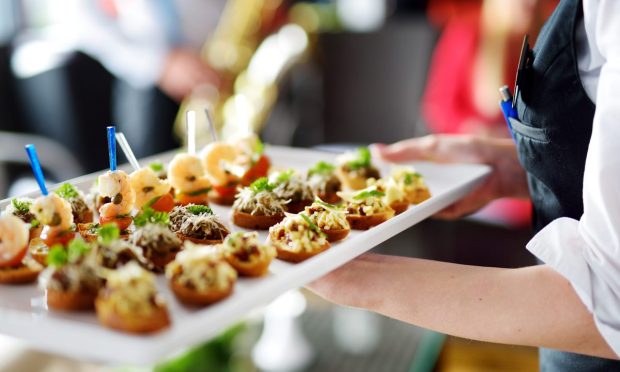As Takeout and Delivery Soar, Catering Businesses Have Been Left Behind in the Digital Shift

With the focus on the on-demand aspect of the digital ordering boom, foods that need to be ordered in advance have largely been left by the wayside. Restaurant aggregators have been delivering orders within the hour since their inception, and in the last couple of years, grocery delivery services have been turning their focus to speed as well, promising order fulfillment in sometimes as little as 10 minutes. This industry-wide emphasis on immediacy has largely left preordering by the wayside.
“We spoke with a large number of restaurants that were offering catering and other types of preorders … and we found that they all had similar problems,” Brian LeVee, vice president of product at restaurant marketing and commerce platform BentoBox, told PYMNTS in an interview. “There weren’t many tools available in this space for these types of catering and other types of preorders — the restaurants were resorting to taking orders over the phone [or] through inquiry forms on their website … We saw those deficiencies were particularly magnified by COVID-related issues and staffing shortages.”
The company recently launched its Pre-Order & Catering product, aiming to get restaurants on board before the busy holiday season. In fact, the company’s research found that 52% of catering orders come in the final three months of the year. With consumers’ increasing expectation of seamless digital convenience, restaurants that can improve their preordering tools by providing an up-to-date user experience have the opportunity to secure diners’ holiday food spending.
“There has been a lot of competition in the online ordering space, especially in the last year and a half, but very, very little in this specific segment or use case,” LeVee said.
Instacompetition
In fact, the competition in this use case is just starting to heat up. A week after BentoBox launched this new product, Instacart made a similar announcement — the online grocery marketplace recently said is acquiring catering software company FoodStorm with an eye toward integrating the latter’s order-ahead and catering capabilities into the Instacart platform.
Read more: Instacart Acquires Catering Software Company in Push to Compete With Restaurant Aggregators
While Instacart kept the focus of the news release on providing these features for grocers, it seems likely that, with the tools already built into the platform, Instacart will make the functionality available to any establishment looking for a digital ordering solution for its catering business.
LeVee, however, argues that the products and pricing plans third-party marketplaces were part of the problem, not the solution, for restaurants aiming to make preordering available online. He cited “steep fees” and the way that these marketplaces withhold customer data from vendors as reasons that the model does not work for restaurants.
“I think that one of the things that is currently unsustainable is the amount of orders that restaurants are getting through the delivery marketplaces,” he said. “There’s clearly going to be a staying power of like takeout and delivery and so restaurants are going to need to find a way to make that profitable, and I think that’s by finding ways to drive diners to their direct channels.”
The Holiday Haul
The holiday season interrupts consumers’ typical buying habits, sending a select handful of foods — turkey, for instance — into high demand. This year, with labor and food shortages wreaking havoc on the restaurant and grocery industries, there have been reports that prices for some of these items may skyrocket in the months ahead, and consumers may see some holiday staples out of stock.
Vendors risk losing the enormous sales opportunity that the season usually provides, and out-of-stocks could even take a toll on customer loyalty, with consumers’ frustration and disappointment potentially sending them to the competition.
While ordering ahead of time cannot prevent these issues entirely, preorders can give restaurants a sense of what they will need, and it can allow them to work out the logistics with suppliers in advance.
LeVee noted, “One of the tools that we’ve gotten the most positive feedback around is the built-in prep sheet, which allows restaurants to aggregate items across orders over a certain window in order to allow them to be easily prepared in bulk.”
Standing Apart
BentoBox’s core value proposition for restaurants, allowing them to accept digital orders without the high costs or loss of customer data associated with using the leading third-party marketplaces, is similar to that of other restaurant web and mobile products. As such, the company aims to provide not only tools for restaurants to receive orders from consumers who seek them out but also outreach tools to acquire new customers and reengage old.
“By being able to power that entire presence from the website to marketing, acquisition and reengagement tools, we’re able to provide [an experience] that that helps restaurants drive traffic from the website and other channels to their direct storefront,” he explained.
Additionally, LeVee hopes the new Pre-Order & Catering product will help set the company apart.
“We really do feel that we’ve identified an underserved market here that is only more important in the last year and a half,” he said, “because of the increase in the types of orders, and the difficulties that restaurants are having in managing staff shortages, needing to have organized and efficient separation and fulfillment.”